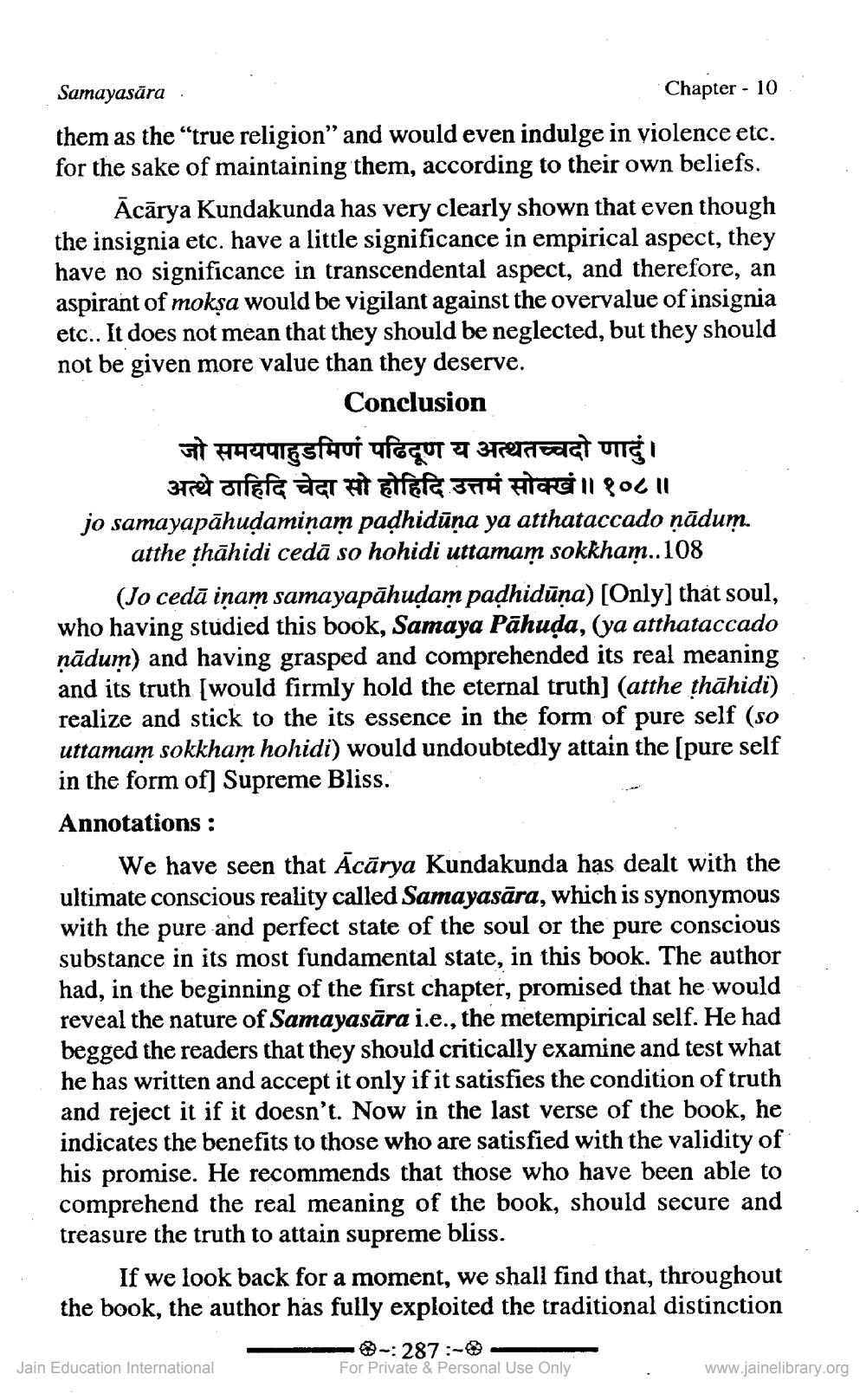________________
Samayasara
Chapter - 10
them as the "true religion" and would even indulge in violence etc. for the sake of maintaining them, according to their own beliefs.
Acārya Kundakunda has very clearly shown that even though the insignia etc. have a little significance in empirical aspect, they have no significance in transcendental aspect, and therefore, an aspirant of mokṣa would be vigilant against the overvalue of insignia etc.. It does not mean that they should be neglected, but they should not be given more value than they deserve.
Conclusion
जो समयपाहुडमिणं पढिदूण य अत्थतच्चदो णादुं । अत्थे ठाहिदि चेदा सो होहिदि उत्तमं सोक्खं ॥ १०८ ॥
jo samayapāhuḍaminam paḍhidūṇa ya atthataccado ṇādum. atthe thāhidi cedā so hohidi uttamam sokkham..108
(Jo cedā iņam samayapāhuḍam paḍhidūņa) [Only] that soul, who having studied this book, Samaya Pahuda, (ya atthataccado ṇādum) and having grasped and comprehended its real meaning and its truth [would firmly hold the eternal truth] (atthe ṭhāhidi) realize and stick to the its essence in the form of pure self (so uttamam sokkham hohidi) would undoubtedly attain the [pure self in the form of] Supreme Bliss.
Annotations :
We have seen that Acārya Kundakunda has dealt with the ultimate conscious reality called Samayasāra, which is synonymous with the pure and perfect state of the soul or the pure conscious substance in its most fundamental state, in this book. The author had, in the beginning of the first chapter, promised that he would reveal the nature of Samayasara i.e., the metempirical self. He had begged the readers that they should critically examine and test what he has written and accept it only if it satisfies the condition of truth and reject it if it doesn't. Now in the last verse of the book, he indicates the benefits to those who are satisfied with the validity of his promise. He recommends that those who have been able to comprehend the real meaning of the book, should secure and treasure the truth to attain supreme bliss.
If we look back for a moment, we shall find that, throughout the book, the author has fully exploited the traditional distinction
Jain Education International
-:287:
For Private & Personal Use Only
www.jainelibrary.org




